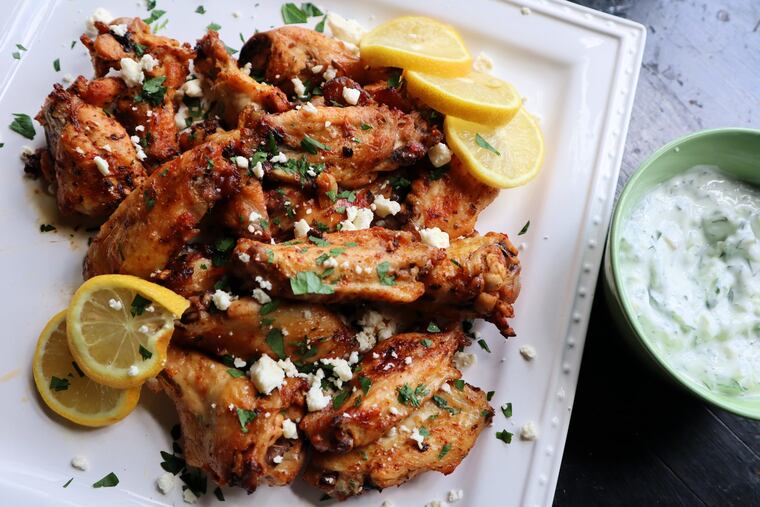The Super Bowl is coming. And we’re running out of chicken wings.
America, we have another crisis. We're running out of chicken wings.

America, we have another crisis. We’re running out of chicken wings.
Days before the Super Bowl, a veritable annual chicken wing holiday, food service providers are scrambling to get their hands on these delectable morsels of poultry — and paying top dollar for them, too.
The U.S. chicken wing market is dominated by the sports calendar. Consumption and sales peak right before the Super Bowl in February and a month and a half later before the NCAA men's basketball tournament. Prices generally ebb and flow with that schedule, spiking before the competitions and coming back down to earth steadily through the rest of the year.
But wing prices have been flying high for months now during the coronavirus pandemic. Experts say there are a number of drivers of the increase, but chief among them is that we're all eating a ton of chicken, including wings. The shortage isn't so much that producers aren't making enough wings, it's that consumers want more and more (and more) of them to scarf down.
"What's been really strange about this year is it's actually been really strong since late summer, the demand for wings," said Christine McCracken, executive director of animal protein at Rabobank. "And that's made it a bit harder for people who didn't have a plan going into [the Super Bowl] or are trying to catch up with demand."
FAT Brands, the company behind wing chains Buffalo's, Hurricane Grill & Wings, Ponderosa Steakhouse and six other restaurant franchises, began planning for the 2021 Super Bowl a year ago, said Andy Wiederhorn, the company's president and chief executive.
He said the company is well-stocked but is still making last-minute arrangements to shore up supplies. It expects to sell 500,000 wings (that’s 250,000 chickens’ worth) over Super Bowl weekend. The entire chicken industry will go through close to 1.4 billion wings, according to the National Chicken Council, up 2% from last year.
Even with restaurant trips down 11% in 2020 because of the pandemic, wing sales jumped 7%, the council reported in its annual “Wing Report.”
"If you think about it, restaurants like wing joints and pizza places were built around takeout and delivery, so they didn't have to change their business model that much during the pandemic," council spokesman Tom Super wrote in the report. "Wings travel well and hold up during delivery conditions. Plus, they align with consumer desire for comfort food during the pandemic. Chicken production remained steady in 2020, and as long as people are sitting around watching TV and maybe drinking a beer, wings will remain in the game."
Wiederhorn said sales at Buffalo's and Hurricane, FAT's two wing-specific brands, are well above their 2019 mark.
By all accounts, 2020 was a weird year for wings. Prices and production jumped right around the Super Bowl, according to the Department of Agriculture, as they usually do. Then the pandemic hit. Sports shut down, including the NCAA men’s college basketball tournament. Restaurants shuttered, and consumers rushed to grocery stores to stock up. They bought a whole lot of chicken, but not so much wings, which are more popular at restaurants rather than for home meals.
Wing prices plummeted, down to less than $1 per pound. Production fell, too, as all of a sudden, the market was flooded with millions of excess wings.
And then, within months, the market rebounded. Stay-at-home orders meant more backyard barbecues over the summer. With nothing to do, football Saturdays and Sundays turned into de facto holidays — perfect for wings. New “ghost kitchens,” or delivery-only restaurants capitalizing on the rise of Grubhub and UberEats, popped up, many specializing in wings.
In normal years, McCracken said, there are things the food service industry can do to ease the strain on its wing supply. The best example, she said, is "boneless wings" (about which a great debate exists as to whether they are really "wings" or just chicken nuggets), which eateries can promote as a tasty (if controversial) alternative.
"Nobody switched to boneless wings this year," she said. "I think it just caught people off guard."
Consumers are also price sensitive when it comes to wings, said Sean McBride, the founder of DSM Strategic Communications and a food industry expert. Demand isn't the only thing inflating wing prices. The pandemic comes with its own bevy of production expenses: more protective and sanitation equipment, worker shortages, transportation costs. Those all get baked into the price of a wing, and companies have to decide whether to swallow that cost, or pass it along to wholesalers, distributors, restaurants and grocery stores.
And with those increased production costs, McBride said, some producers may decide to allocate fewer resources to breaking down birds on the assembly line, and choose instead to sell more whole chickens and half chickens rather than chicken parts.
That contributes to the wing availability crunch, because restaurants have to spend more for a now-smaller supply of processed wings, and supermarket meat counters have to spend more time butchering birds to package wings, thigh, breasts and legs separately.